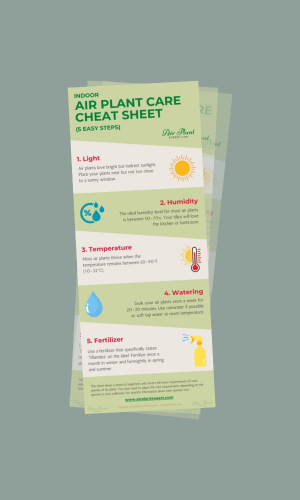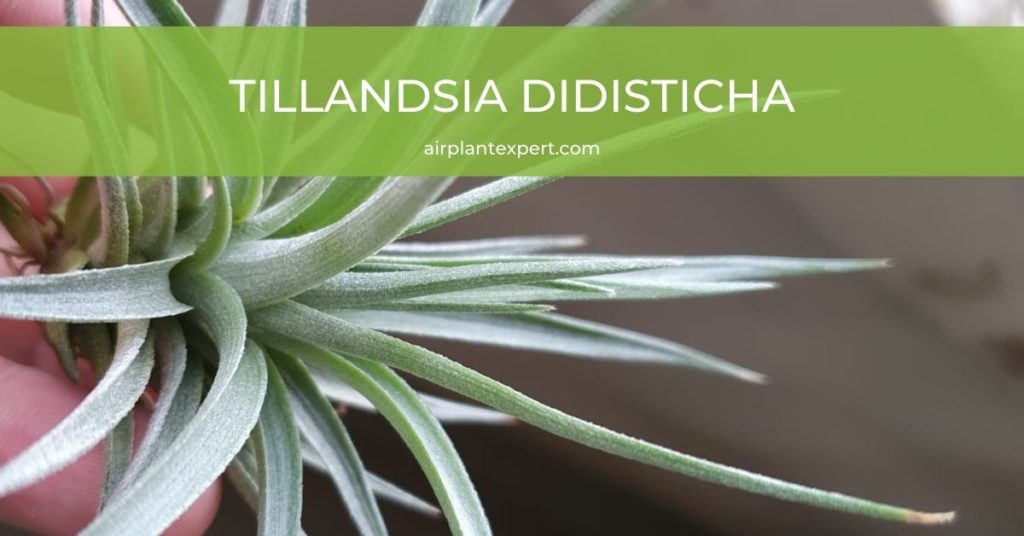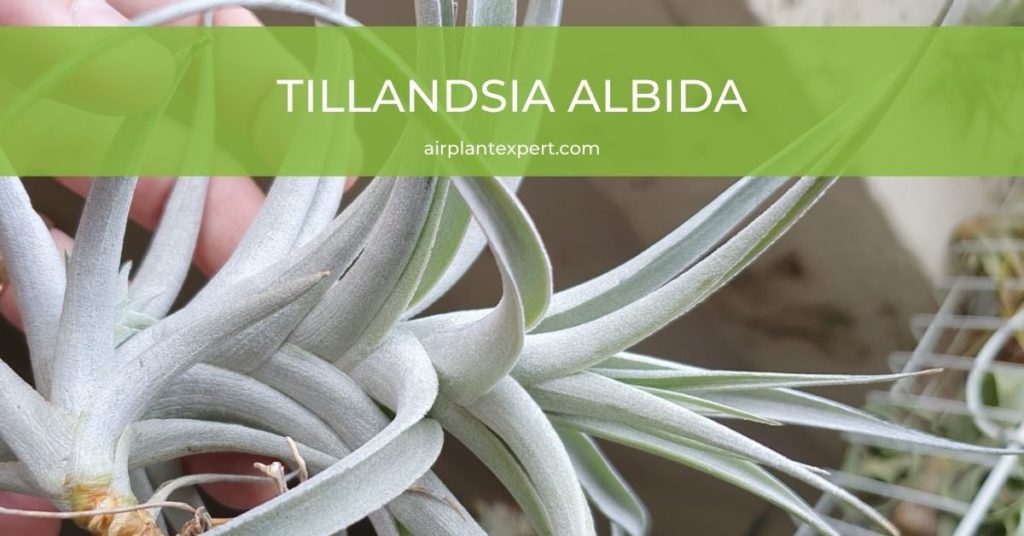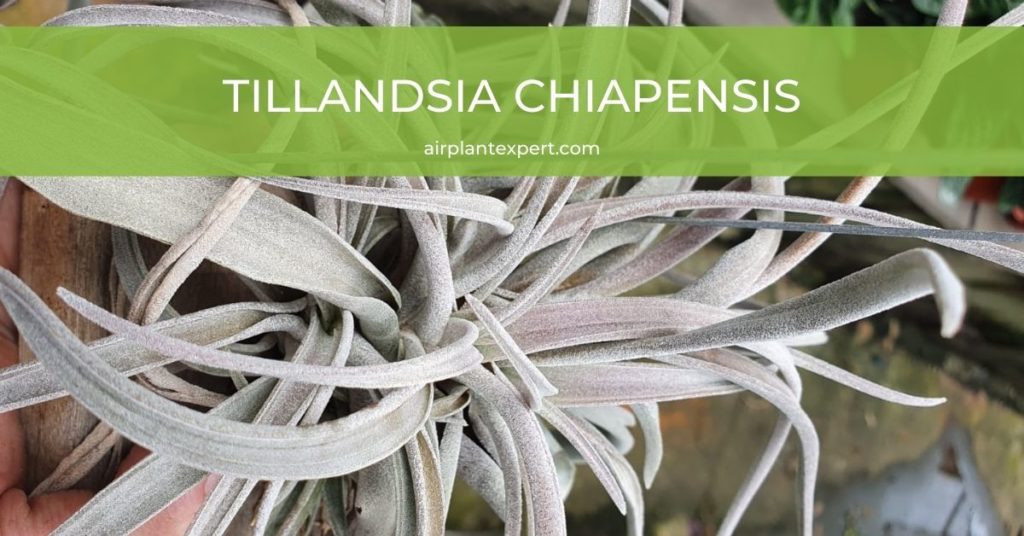Tillandsia Didisticha has one of the most impressive inflorescences of any species of air plant. The bloom spikes are arranged parallel to each other and present a distinctive pyramidal shape. The flowering stalk is long-lasting and can often reach twice the height of the plant.
Quick Guide
How to Care for Tillandsia Didisticha
Native to the forests and mountains of South America, most notably Peru, Bolivia, Brazil, Paraguay, and Argentina, Tillandsia Didisticha has adapted to a wide range of environments and grows well indoors.
Caring for Didisticha is straightforward, requiring bright light and a preference for drier environments compared to some of its relatives. The ease of care, combined with a lengthy blooming period make this a sought-after species for enthusiasts and casual plant lovers alike.
The secret to success is good air circulation. Didisticha requires good airflow so position it near a window or outside door that is frequently left open. However, please note Didisticha is more susceptible to cold than many air plants so keep it in a sheltered location outdoors and not too close to open windows and doors when kept inside.
This species has semi-stiff foliage so gentle handling is required. Otherwise, the leaves will get damaged. The fragile leaves make it difficult to hang Didisticha so I recommend mounting it on driftwood or a decent-sized rock instead.
How to Water Tillandsia Didisticha
Tillandsia Didisticha mainly grows in rainforests so it prefers frequent watering like other mesic air plants. Submerging the plant in room-temperature water for 20-30 minutes once a week should be sufficient in most cases.
Rainwater is better than tap water as it contains natural nutrients, however, soft tap water is fine as long as you fertilize your air plants occasionally. Avoid hard tap water to prevent a calcium build-up on the plant’s leaves which can clog the plant’s tiny trichomes.
I mainly use pond or rainwater. If your options are limited soft tap water is fine as long as it has been left to stand for 24 hours to allow the chlorine to evaporate. I recommend letting your water stand for 48 hours to be sure.
Turn the plant upside down after soaking and give it a gentle shake to help remove any excess water. Then hang or turn your plant upside down for several hours so any water trapped between the leaves can drip out, this helps to prevent rotting.
Monitor your plant’s response to water and adjust accordingly since environmental factors can affect its needs. By maintaining a consistent watering regime adapted to the plant’s environment and Didisticha’s specific needs, you will support a thriving and healthy plant.
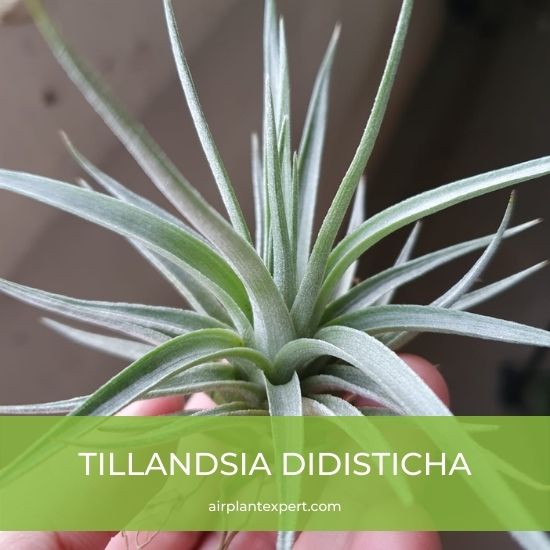
How to Propagate Tillandsia Didisticha
Propagating Tillandsia Didisticha can be a rewarding experience, particularly from seeds. However, the most reliable method for propagation is by separating pups, which are baby plants that form at the base of the mother plant.
After the mother plants flower, they will likely produce pups. Wait for the pups/offsets to grow to at least one-third the size of the parent plant before removing them. I soak my plants the day before separation to fully hydrate the parent plant and the pups.
Gently pull the pups from the base of the mother plant. If they resist, use a sterilized knife to separate them with minimal damage. Be careful when handling your plants as the tiny trichomes on the leaves are easily damaged.
It’s important to maintain a warm temperature and moderate to high humidity during the early stages of pup growth. Regular misting will help to keep the pups happy, and after 3-4 weeks they can be cared for in the same way as mature air plants.
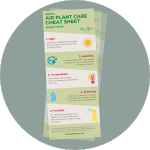
Get Your FREE Air Plant Care Cheat Sheet
5 easy steps to keep your air plants happy and healthy.
Flowers and Expert Tips
When in bloom, you’ll be captivated by Tillandsia Didisticha’s stunning flower spikes. The spikes are a pinkish-to-coral color and contrast beautifully with the plant’s foliage.
This species often features a stunning inflorescence; a term that refers to the complete flower head, including stems, stalks, bracts, and the flowers themselves.
Typically, the flowering process for Didisticha is a wonderful spectacle. The plant produces tubular funnel-shaped white flowers ranging from 15-20 mm long. The petals often have a stunning eye-catching hue, although they are predominantly white.
This species varies greatly in size and shape so don’t be disappointed if your plant only grows to around 10″ in diameter, that is common.
Remember to take cues from your plant; overwatering can be just as detrimental as neglect. Also, during the growing seasons fertilizing every two weeks will encourage blooming and contribute to the plant’s overall health.
Tillandsia Didisticha Varieties and Hybrids
While specific varieties of Tillandsia Didisticha are not widely differentiated, this species can exhibit varied growing sizes and inflorescence colors, such as ‘Large Form’ which can reach up to 16 inches across.
In the world of botanical nomenclature, it is important to note that certain synonyms are recognized which refer to the same species.
For example, Anoplophytum Didistichum is a synonym for Tillandsia Didisticha as both names represent the same plant. Didisticha has many different names which can cause confusion.
Hybrids are where Didisticha truly shines, combining traits from different species to create new variations.
These are some of my favorite hybrids.
- Tillandsia Didisticha ‘Large Form’
- Tillandsia ‘White Tips’
- Tillandsia ‘Burnt Fingers’
- Tillandsia Baguagrandensis x Didisticha
- Tillandsia Kautskyi x Didisticha.
Tillandsia Didisticha ‘Large Form’ has a beautiful shape and a short compound inflorescence. This form can grow to double the size of the standard form with much thicker leaves.
Tillandsia ‘White Tips’ is an unusual cross (Neglecta x Didisticha) by air plant expert Pam Koide Hyatt. When the new pups leaves begin to emerge they initially have white tips.
When adding to your collection, always verify the species or hybrid you are acquiring to ensure the correct care and to appreciate the unique qualities each plant has to offer.

